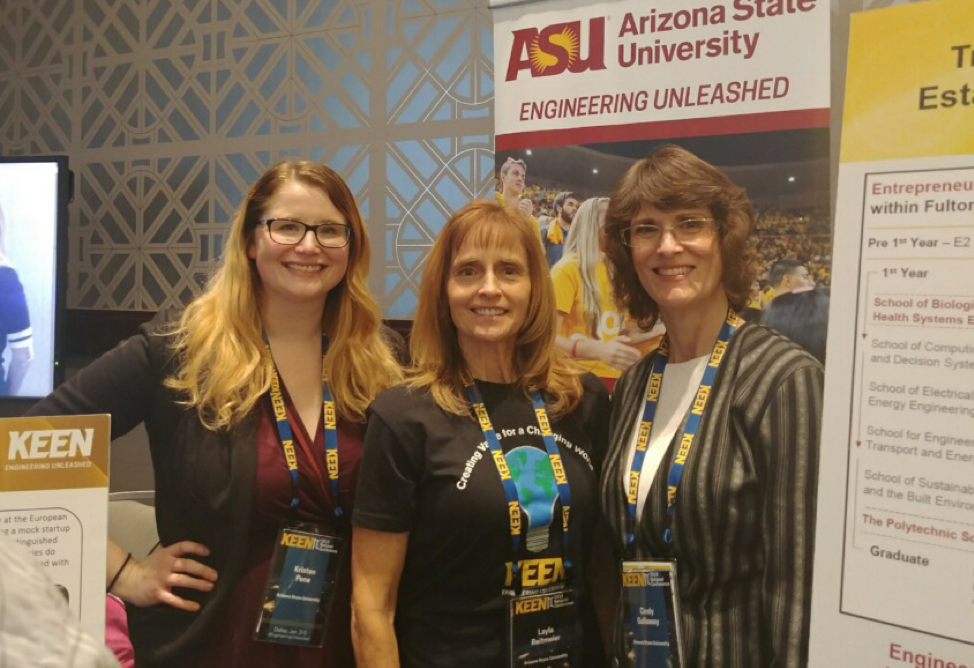Crossing I's and Dotting T's: Administering the Initiative
Crossing I's and Dotting T's: Administering the Initiative

"EM integration will start with a plan and grow to reflect the particular institution. The effort will encompass faculty, staff and students, each with a different relationship to EM."
- Layla Reitmeier, Project Manager, KEEN Team
Case at a glance
Integration goals
This case focuses on the administration of the overall integration initiative, with the goal of establishing and refining the initiative’s infrastructure.
Materials affected
Document repositories, policy and process definition documents, tracking documents, budget documents, stakeholder reports, training materials, communication (marketing and branding) protocols
Lessons learned
It helps to remember that entrepreneurial mindset (EM) integration will occur at multiple levels and in numerous forms. As a result, centralized administration of the budget is best for expenditure tracking efficiency and accountability.
Context
The administration of ASU’s EM integration initiative involved developing new or recalibrating existing partnerships within the six schools of Fulton Schools or Engineering (FSE) to accomplish tasks including hiring for new positions, expanding roles and responsibilities, reallocating resources, and increasing demands for services such as marketing support.
Integration details
A timeline of the administrative details of the EM integration initiative follows.
2015
Spring: FSE learned about KEEN, and leaders agreed to explore establishing an EM integration initiative.
Summer: Initiative proposal developed and shared.
Fall: Initiative proposal submitted and funded.
2016
Spring: Recruited and hired for initiative project manager (PM) role; established work plan; PM developed budget and other policy and process documents and set up document repositories; recruited and hired for program coordinator (PC) role. PM developed relationships and held meetings with business staff across ASU’s engineering schools, and supported securing broad faculty buy-in, including managing the creation of faculty and staff EM training; PC and faculty conducted training with student engagement staff.
Summer: FSE leaders assembled an EM integration initiative advisory board; KEEN Professor Mini-Grants (KPMG) Program created, including development of budget and application processes, as well as review team; KEEN Student Mini-Grants and KEEN Student Research Grants program and process created. Both faculty and student mini-grant programs were marketed and branded. Educated team members about ASU/FSE/KEEN branding requirements.
Fall: First Devils Invent (DI) event, Fulton Furnace Fallout, held at the Tempe Campus, and second and third DI events followed; first KEEN Professor Mini-Grants and KEEN Student Mini-Grants and Research Grants awarded; developed relationships with Office of Research and Sponsored Administration Projects (ORSPA); and hired research administrator, who co-approves expenditures.
2017
Spring: PM and PC attended the KEEN National Conference; team created FSE program-wide EM plan poster; team revised work plan; recruited and hired for administrative assistant role; recruited and hired student workers, program assistant, Entrepreneurial Catalysts, and web technician/graphic artist; PM and PC presented at the American Society for Engineering Education (ASEE) Pacific Southwest Conference on Cultivating an Understanding of the Entrepreneurial Mindset through Immersive Makerspace Design Challenges; and updated and revised KEEN Professors Mini-grant business process guidelines.
Summer: Supported the revised E2 Camp EM activity, and managed the development of the initiative’s web pages.
Fall: Supported the project evaluation. Staff attended training on new financial system and joined the ASU event planner group.
2018
Spring: Prepared for the new ASU financial system and impact on the initiative monitoring process.
Summer: Worked with external vendors, internal vendors, and ORSPA on closing out the initiative’s budget for the first two years.
NOTE: Supporting resources for this case study can be found within its companion KEEN card (link below), which is also where the community can discuss the case and its broader topic.
Integration outcomes
ASU’s EM integration initiative now has a substantial administrative infrastructure that includes people, systems, policies, and processes. In fact, the initiative now has a team that comprises faculty from numerous schools, as well as internal service providers, student engagement staff, and other project staff. Through nearly two years of connecting with colleagues and stakeholders, including students, via email newsletters, individual emails, conferences and workshops, FSE programming, one-on-one conversations, and special events, there is an ever-growing group that is committed to the value of EM, and that is very satisfying.
Future plans
Future plans for administering the EM @ ASU initiative include significant focus on supporting evaluation of the overall initiative. Beyond that, the team plans to incorporate lessons learned wherever appropriate to further strengthen the initiative’s infrastructure so that we are best able to continue expanding, deepening, and improving our integration of EM throughout FSE. We are also instituting a project management tool for a labor-intensive event and will study using the tool across the initiative.
Considerations
ASU’s size increased the need for significant administrative infrastructure. Without the infrastructure, bringing awareness about the initiative and its many opportunities to school directors, faculty, student engagement staff, and students would have been much more difficult to facilitate and track, and the effectiveness of meetings and communication would have been compromised.
A few final considerations include the following:
- It’s important to identify and partner with faculty and staff who are or are willing to be early adopters.
- It helps to remember that EM integration may occur at multiple levels and in numerous forms. Centralized administration of the budget is therefore best for efficiency and accountability.
- Partnering with business staff to potentially alter financial processes is essential as they provide crucial support in the expediently hiring and generating paperwork for changes in faculty status.
